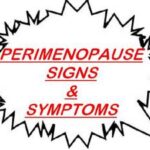1) What is menopause?
Menopause is the final and irreversible termination of menstruation (aka menses, monthly periods). Menopause normally begins 12 months after the final menstruation.
2) What is perimenopause?
Perimenopause (aka premenopause) is the transition period leading up to menopause. The duration of this transition can range from 2-5 to as long as 10-15 years before menopause.
3) What is the average age for menopause?
The average age range for menopause is 50-52 years. However, some women will go through menopause considerably earlier than that, in their 40s. “Early menopause” is menopause that takes place under 40 years.
4) What happens during (peri)menopause?
The basic feature of (peri)menopause is hormonal imbalance. There is a fluctuation in the production of estrogen and progesterone, the hormones that regulate menstruation. Because of this imbalance, (peri)menopausal women experience certain symptoms that are collectively known as climacteric syndrome.
5) What are the signs and symptoms of menopause?
Menstrual irregularity is usually the first sign of the hormonal imbalance leading to menopause. Monthly periods may become heavier or lighter and/or occur at irregular intervals. Hot flashes (aka hot flushes), night sweats, and mood swings are also telltale indications of menopause. The intensity and duration of these symptoms vary from woman to woman: Some women seem to just breeze through “the change of life” while others have a hard time coping and require medical and psychological support.
6) What happens to the heart and bones in menopause?
There seems to be a connection between reduced estrogen levels and cardiovascular (heart) disease and osteoporosis (loss of bone mass, weakening of bone, increased fracture risk). Studies have shown a positive correlation between estrogen and “good cholesterol” (HDL), while low estrogen levels raise “bad cholesterol” (LDL). Cardiovascular disease is a major cause of death in post-menopausal women.
7) What can I do to protect myself from heart disease and osteoporosis?
You have more control than you think. Maintain a healthy weight through balanced nutrition and regular exercise. Pump up your calcium intake. Calcium is found in dairy products, broccoli, legumes, and sardines. Eat foods high in fiber (cereals, rice, whole-grain breads, fruits, vegetables) and iron (lean red meat, eggs, poultry, fish, leafy green vegetables). Avoid fatty foods (especially saturated fats). Minimize sugar, salt, and alcohol intake. Give up smoking.
8) What about hormone replacement therapy (HRT)?
Hormone replacement therapy (aka menopausal hormone therapy, MHT) is surrounded by lots of confusion and dispute. For example, while estrogen replacement therapy has been known to reduce hot flashes, increase HDL, and reduce the risk of osteoporosis, it has also been linked to serious adverse effects, such as high blood pressure, blood clots, increased cancer risk, and certain estrogen-dependent conditions (e.g. fibroids and endometriosis).
Hormone replacement therapy is not for everyone. You need to consult your physician, who will take your detailed history and work with you to decide what is best for you. In any case, currently the consensus on hormone therapy is to opt for the lowest possible dose for the shortest time needed to obtain the desired results.


